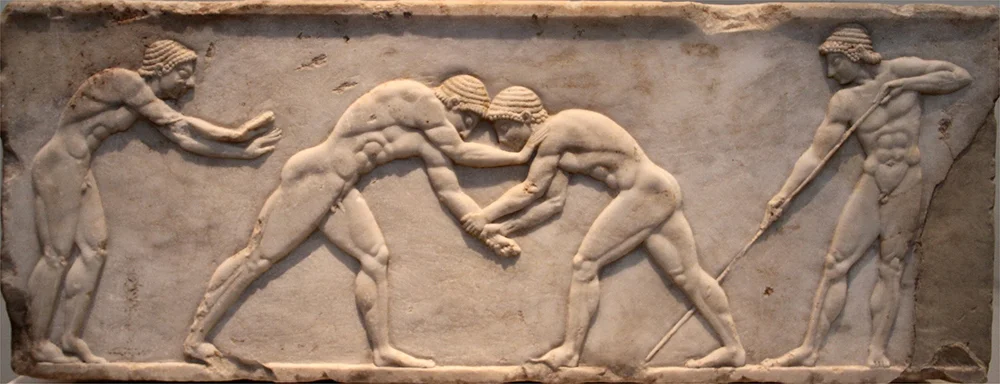Astypalaia is not the first place that comes to mind in regards to unearthing ancient erotic graffiti with its seemingly wild and remote location. However a new discovery names it the home of the very first homosexual erotic graffiti.
Dr Andreas Vlachopoulos, a specialist in prehistoric archaeology unsuspectingly came across some racy inscriptions and large phalluses carved into Astypalaia’s rock peninsula at Vathay. The inscriptions, which have been dated back to the fifth and sixth centuries, were large and clear, leaving no doubt as to the motivation behind the artworks.
“They were what I would call triumphant inscriptions,” said the Princeton professor who managed to find the inscriptions. “They claimed their own space in large letters that not only expressed sexual desire but talked about the act of sex itself,” he told the Guardian. “And that is very, very rare.”
The inscriptions have provided researchers with an excellent insight into the private lives of those who inhabited ancient Greece. One of the many inscriptions, believed to have been carved during the sixth century BC stated: “Nikasitimos was here mounting Timiona (Νικασίτιμος οἶφε Τιμίονα).
“We know that in ancient Greece sexual desire between men was not a taboo,” added Dr Vlachopoulos, who returned to the island last week accompanied with a team comprising of topographers, photographers, conservationists and students. “But this graffiti … is not just among the earliest ever discovered. By using the verb in the past continuous [tense], it clearly says that these two men were making love over a long period of time, emphasising the sexual act in a way that is highly unusual in erotic artwork. ”
Found at the highest point of the promontory overlooking the Bay of Vathay, located on the island’s north-western tip, the inscription has led archaeologists to believe that soldiers may once have been garrisoned there.
Engraved in the limestone were two penises under the name of Dion, dating back to the fifth century BC, discovered at lower heights of the cape. “They would seem to allude to similar behaviour on the part of Dion,” said Vlachopoulos.
Angelos Matthaiou, an epigrapher, stated that the ancient graffiti exposed information on the personal lives of the ancients, as well as the extent of the literacy of the people at the time when the Acropolis in Athens was not yet built.

“Whoever wrote the erotic inscription referring to Timiona was very well trained in writing,” said Matthaiou, for more than 25 years the general secretary at the Greek Epigraphic Society. “The letters have been very skillfully inscribed on the face of the rock, evidence that it was not just philosophers, scholars and historians who were trained in the art of writing but ordinary people living on islands too.”
Other examples of the rock artwork were discovered on the island, including some carvings of oared ships, daggers and spirals- all of which are clear despite the corrosive nature of the wind and sea.
The most well known motif of early Cycladic art depicting waves of the sea and spirals symbolized perpetual motion as the driving force of the island and its communities.
“We know that Greek islands were inhabited by the third millennium BC., but what we have found is evidence that, even then, people were using a coded language of symbols and imagery that was quite sophisticated,” said Dr Vlachopoulos.
Astypalaia is better known for its array of ancient cemeteries of mass graves containing the remains of newborn infants. However, now homosexual erotica can be added to the list.
“Few Greek islands have been properly explored or excavated and these findings are testimony to why it is so important that they are,” said the archaeologist.
Contributing Source: The Guardian
Header Image Source: WikiPedia




